
San-Pédro: The Hidden Gem of Cote d'Ivoire
San-Pédro, Cote d'Ivoire: Discover pristine beaches, vibrant markets, and the gateway to West Africa's rainforests in this charming port city.
San-Pédro is a vibrant port city located along the southwestern coast of Cote d'Ivoire. Known for its stunning beaches and lush landscapes, San-Pédro offers a blend of natural beauty and rich culture. The city serves as a gateway to the Taï National Park, one of the last primary rainforest areas in West Africa, making it a destination for nature lovers and adventure seekers alike. The city's port is the second largest in the country and plays a crucial role in the economy. Visitors can witness the bustling activity of ships and cargo, adding to the dynamic atmosphere of San-Pédro. Despite its industrial importance, the city maintains a laid-back vibe, perfect for those looking to unwind. San-Pédro also boasts a variety of local markets and eateries where tourists can sample traditional Ivorian cuisine. From grilled fish to spicy stews, the flavors are as diverse as the people. The friendly locals are always eager to share stories and recommend hidden spots, making every visit to San-Pédro a unique experience.
Local tips in San-Pédro
- Visit the Taï National Park early in the morning for the best chance to see wildlife.
- Try the local seafood at the beachside restaurants for an authentic taste of San-Pédro.
- Bring cash as many local markets and vendors do not accept credit cards.
- Hire a local guide to explore the hidden gems and learn more about the city's history.
- Stay hydrated and use sun protection, especially when visiting the beach and outdoor attractions.
San-Pédro: The Hidden Gem of Cote d'Ivoire
San-Pédro is a vibrant port city located along the southwestern coast of Cote d'Ivoire. Known for its stunning beaches and lush landscapes, San-Pédro offers a blend of natural beauty and rich culture. The city serves as a gateway to the Taï National Park, one of the last primary rainforest areas in West Africa, making it a destination for nature lovers and adventure seekers alike. The city's port is the second largest in the country and plays a crucial role in the economy. Visitors can witness the bustling activity of ships and cargo, adding to the dynamic atmosphere of San-Pédro. Despite its industrial importance, the city maintains a laid-back vibe, perfect for those looking to unwind. San-Pédro also boasts a variety of local markets and eateries where tourists can sample traditional Ivorian cuisine. From grilled fish to spicy stews, the flavors are as diverse as the people. The friendly locals are always eager to share stories and recommend hidden spots, making every visit to San-Pédro a unique experience.
When is the best time to go to San-Pédro?
Iconic landmarks you can’t miss
ENOTEL BEACH San-Pedro
Discover serenity and adventure at Enotel Beach San-Pedro, a stunning resort hotel along Côte d'Ivoire's captivating coastline.

Hôtel Sophia San Pedro
Discover comfort and hospitality at Hôtel Sophia San Pedro, your ideal gateway to explore the vibrant culture and stunning landscapes of Côte d'Ivoire.

Hôtel Nahoui
Experience comfort and tranquility at Hôtel Nahoui, your ideal retreat in the picturesque city of San-Pedro, Ivory Coast.

Hôtel Palm Rock Beach
Experience coastal bliss at Hôtel Palm Rock Beach in San-Pédro, where comfort meets local charm for an unforgettable getaway.
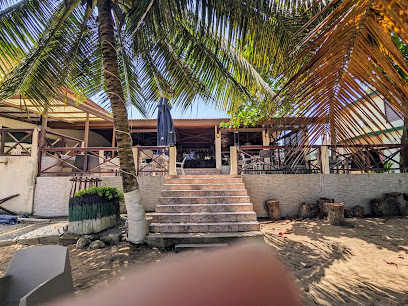
Hôtel Rialto
Experience the perfect blend of comfort and local charm at Hôtel Rialto, your ideal retreat in vibrant San-Pédro, Côte d'Ivoire.

Hotel CANNELLE
Experience the perfect blend of comfort and culture at Hotel CANNELLE in San-Pedro, a tranquil oasis for travelers exploring Ivory Coast.

San-pedro
Explore San-Pedro: A vibrant coastal city in Ivory Coast offering stunning beaches, rich culture, and a taste of local life.

Grand Mosque San Pedro
Explore the Grand Mosque San Pedro, a stunning architectural gem in Ivory Coast that reflects the region's rich Islamic culture and community spirit.
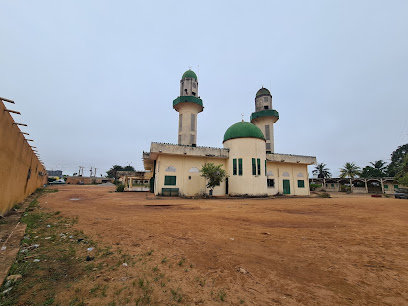
Le Rocher des Amours
Explore Le Rocher des Amours, a stunning historical landmark in San-Pedro, where breathtaking views meet rich cultural heritage.

Plage de San pedro
Experience the serene beauty and vibrant culture at Plage de San Pedro, a must-visit beach destination in Côte d'Ivoire.

Le Guide de San Pedro
Experience the enchanting beauty of San Pedro, Côte d'Ivoire, with expert-led tours showcasing culture, nature, and unforgettable adventures.
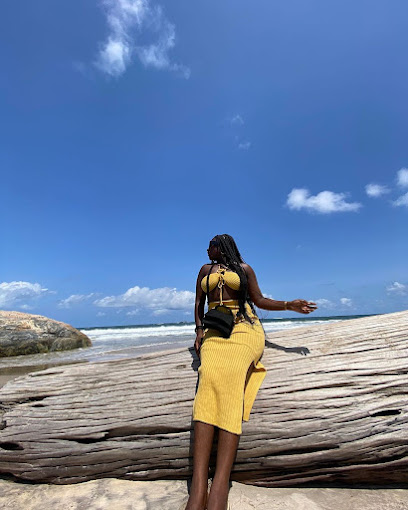
Monument de la Paix
Explore the Monument de la Paix in San-Pedro, a captivating tribute to peace that embodies the spirit and culture of Côte d'Ivoire.

Court D'arbitrage Et De Médiation De Côte d'Ivoire San Pedro
Explore the Court D'arbitrage Et De Médiation in San Pedro – a glimpse into Ivorian justice and culture.
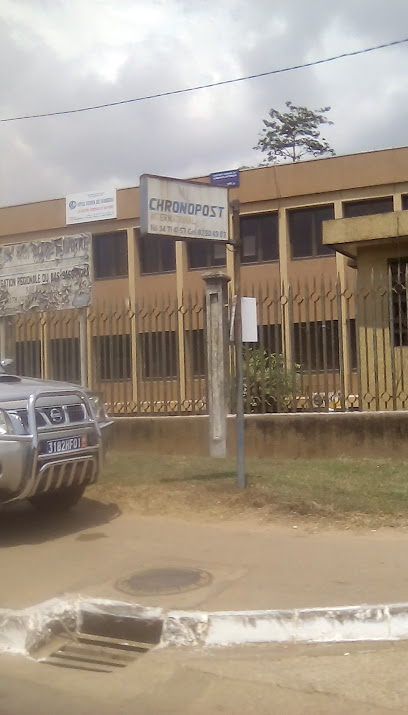
Plage de Taki
Experience the tranquil allure of Plage de Taki, a stunning beach destination in San-Pedro, Ivory Coast, perfect for relaxation and cultural immersion.

Piscine Naturelle
Explore the tranquil beauty of Piscine Naturelle, a hidden gem in San Pedro, perfect for relaxation and unforgettable nature experiences.

Unmissable attractions to see
San-pedro
Explore the stunning beaches and vibrant culture of San-Pedro, Côte d'Ivoire, a coastal jewel that promises unforgettable experiences.

Le Rocher des Amours
Explore Le Rocher des Amours, a stunning historical landmark in San-Pedro, where love and breathtaking views meet in perfect harmony.

Monument de la Paix
Discover the Monument de la Paix in San-Pedro, a serene tribute to harmony with stunning ocean views and a peaceful atmosphere.

Plage de Taki
Explore the serene shores of Plage de Taki, a hidden paradise in San-Pedro, where nature's beauty unfolds in every wave and sunset.
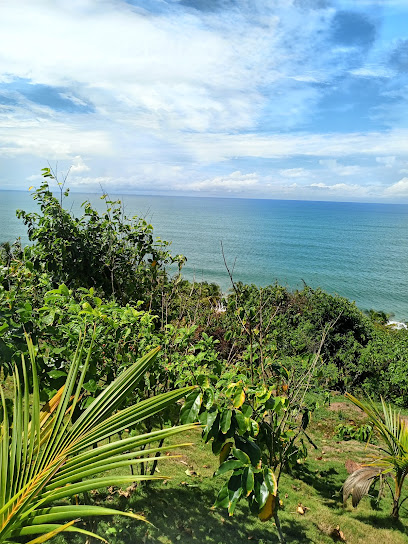
Piscine Naturelle
Explore the serene beauty of Piscine Naturelle in San-Pedro - a peaceful natural swimming pool surrounded by lush landscapes, perfect for relaxation and adventure.

Mangrove route sans pedro
Discover the magical Mangrove Route in San Pedro, a tranquil escape into nature filled with stunning scenery and rich biodiversity.

Rocher de la baie de San-Pedro
Explore the stunning cliffs and serene vistas at Rocher de la Baie de San-Pedro, a must-see tourist attraction in Ivory Coast.
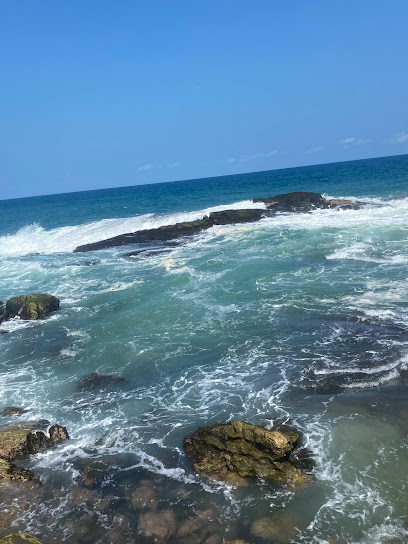
Essential places to dine
La Cabana
Experience authentic Ivorian cuisine at La Cabana in San-Pédro - where delicious flavors meet warm hospitality.
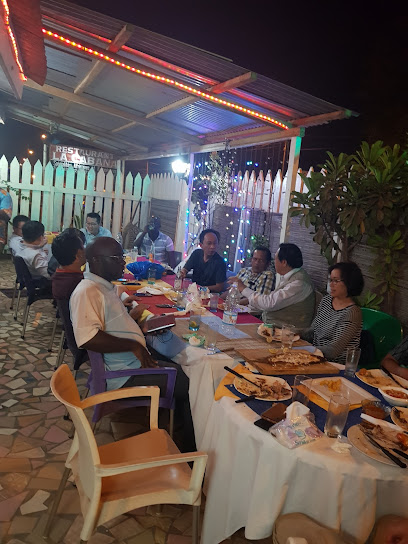
Jardin d'Eden
Experience the flavors of Côte d'Ivoire at Jardin d'Eden in San-Pédro—where cuisine meets tranquility amidst lush surroundings.
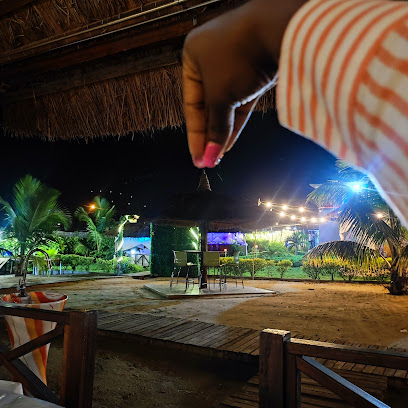
Bar De L'industrie; El Pescador
Discover authentic Ivorian cuisine at Bar De L'industrie; El Pescador in San-Pédro - where flavors meet culture.

Le bouquet garni
Experience the authentic flavors of Côte d'Ivoire at Le Bouquet Garni in San-Pédro – a culinary gem not to be missed.

Toit Rouge
Discover culinary delights at Toit Rouge in San-Pédro – where local flavors meet warm hospitality.

Le Bunker
Discover the culinary delights at Le Bunker in San-Pédro, where local flavors meet international cuisine in an inviting atmosphere.

Le même coin
Discover authentic Italian flavors at Le même coin in San-Pédro – where every pizza is crafted with love and fresh ingredients.
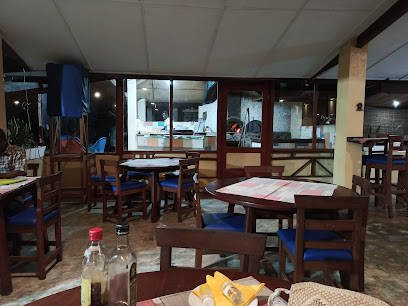
RESTAURANT LA PAILLOTE GOURMANDE
Experience authentic Ivorian cuisine and vibrant nightlife at Restaurant La Paillote Gourmande in San-Pédro.

Restaurant Horizon
Experience the rich flavors of Ivorian cuisine at Restaurant Horizon in San-Pédro - where every meal tells a story.

Maison blanche
Experience authentic Ivorian cuisine at Maison Blanche in San-Pédro – where flavor meets culture in every dish.

Douces Saveurs Beach
Experience exquisite dining at Douces Saveurs Beach in San-Pédro, where local flavors meet stunning ocean views for an unforgettable meal.
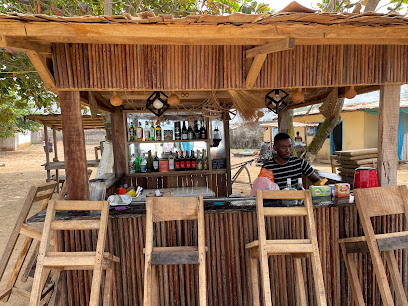
restaurant byblos
Discover Byblos Restaurant in San-Pedro: A culinary journey blending local flavors with Middle Eastern delights.
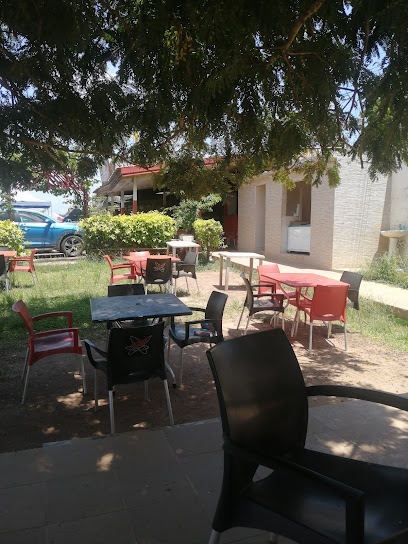
Ocean Food
Discover Ocean Food in San-Pédro - where fresh seafood meets breathtaking ocean views in an unforgettable dining experience.

L'original SanPedro
Discover authentic Ivorian cuisine at L'original SanPedro in Quartier Sotref - where every meal tells a story.

Le bananier
Discover authentic Ivorian flavors at Le Bananier in San-Pedro—where culinary artistry meets warm hospitality.

Markets, malls and hidden boutiques
SOCOCE CITY SAN-PEDRO
Explore SOCOCE CITY SAN-PEDRO, a vibrant shopping mall offering a blend of local and international shops, dining, and entertainment in the heart of San-Pedro.

Super Market Good Price
Discover local flavors and essentials at Super Market Good Price in San Pedro, your go-to supermarket for a delightful shopping experience.

Agence jumia
Explore fashionable clothing at Agence Jumia, a vibrant boutique in San-Pédro, showcasing local styles and quality garments for every taste.

TOUTON SAN PEDRO
Explore TOUTON SAN PEDRO in San Pedro for authentic local crafts, unique gifts, and a vibrant shopping experience reflecting the rich culture of the region.

Abidjan
Explore the vibrant jewelry scene of Abidjan, where tradition meets modern elegance in stunning handcrafted pieces.

HBL boutique.CI
Explore the vibrant world of print at HBL boutique.CI, San-Pedro's premier magazine store showcasing local and international publications.

DANISTORE San-Pédro
Discover the vibrant world of Ivorian fashion at DANISTORE San-Pédro, where unique styles and local culture come together.

WINNER SHOP
Explore the vibrant fashion scene at Winner Shop, San-Pedro's premier clothing store featuring local and international styles.

boutique aïdara
Discover local flavors at Boutique Aïdara, San-Pédro's charming grocery store offering fresh produce and Ivorian delicacies.

Librairie BURMA
Explore Librairie BURMA: A charming bookstore in San-Pédro that offers a diverse collection of literature for every reader.
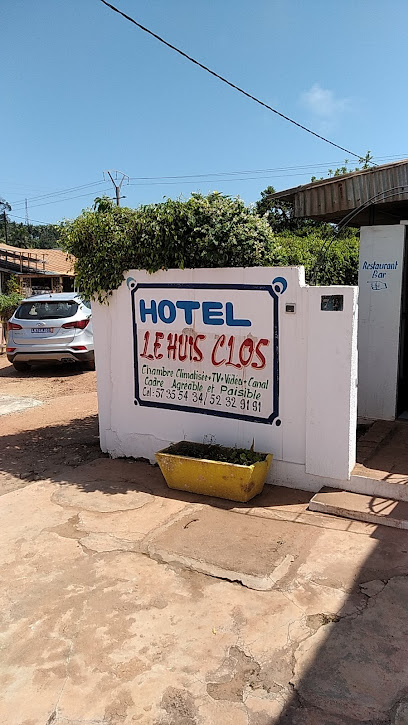
SHISHA SHOP SAN PEDRO
Discover the vibrant culture of shisha at Shisha Shop San Pedro, where flavorful tobacco blends and a welcoming atmosphere await.

KM SHOPPING
Experience the vibrant fashion scene at KM Shopping, the premier clothing store in San-Pedro, showcasing local and international styles.

Boutique LUMENA
Discover the vibrant shopping experience at Boutique LUMENA in San-Pédro, where local culture meets international flair.

Univers du bonheur
Shop trendy and affordable youth fashion at Univers du Bonheur in San-Pedro, a must-visit for stylish souvenirs and local flair.

Lieu de Vente
Experience local culture and cuisine at Lieu de Vente, San-Pedro's vibrant supermarket filled with fresh produce and unique Ivorian goods.

Essential bars & hidden hideouts
Hôtel Atlantique
Experience serenity and comfort at Hôtel Atlantique, your perfect getaway in the heart of San-Pédro, Côte d'Ivoire.

VOX NIGHT CLUB
Experience the electrifying nightlife at VOX Night Club in San-Pédro, where vibrant music and a lively atmosphere come together.
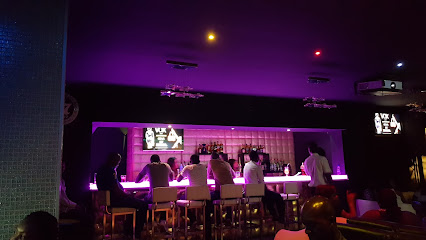
LA ROCHE NOIRE
Discover the flavors of San-Pédro at La Roche Noire, where local culinary traditions meet international delights in a cozy atmosphere.

Cyclone Bar
Discover the lively Cyclone Bar in San-Pédro - a hub for nightlife featuring great drinks, music, and vibrant local culture.

Bar De L'industrie; El Pescador
Discover the authentic taste of Côte d'Ivoire at Bar De L'industrie; El Pescador, a seafood lover's paradise in San-Pédro.

Toit Rouge
Experience the vibrant flavors of Ivorian cuisine at Toit Rouge in San-Pédro, where every meal tells a story.

Le Kirikou Bar
Discover the vibrant nightlife at Le Kirikou Bar, a bustling hotspot in San-Pédro offering a diverse drink selection and a lively atmosphere.

DIMATIN ZOUGLOU
Discover the lively spirit of San-Pédro at Dimatin Zouglou, a premier live music bar celebrating Ivorian culture and rhythm.

RESTAURANT LA PAILLOTE GOURMANDE
Experience the vibrant culinary scene of San-Pédro at Restaurant La Paillote Gourmande, where local flavors meet international cuisine.

Plage de San pedro
Discover the serene beauty of Plage de San Pedro, a coastal gem in Côte d'Ivoire perfect for relaxation and adventure.
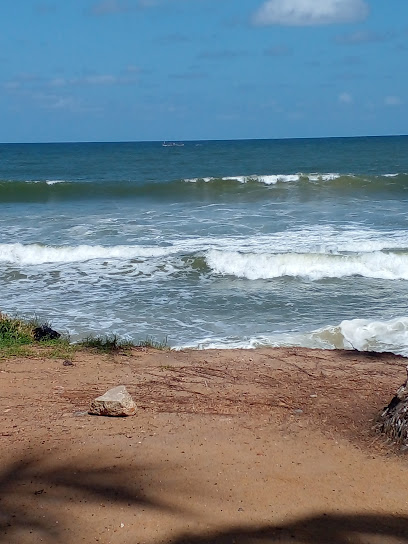
restaurant byblos
Experience the vibrant flavors of Ivorian cuisine at Byblos Restaurant in San-Pedro, where delightful dishes meet warm hospitality.

Maquis Bar ZOUGLOU TIME
Experience the vibrant culinary scene of San-Pédro at Maquis Bar ZOUGLOU TIME, where authentic Ivorian flavors meet lively atmosphere.

LE PLUTUS CAVE
Experience the vibrant nightlife at Le Plutus Cave, a lively bar in San-Pedro, Côte d'Ivoire, where locals and tourists come together for unforgettable moments.
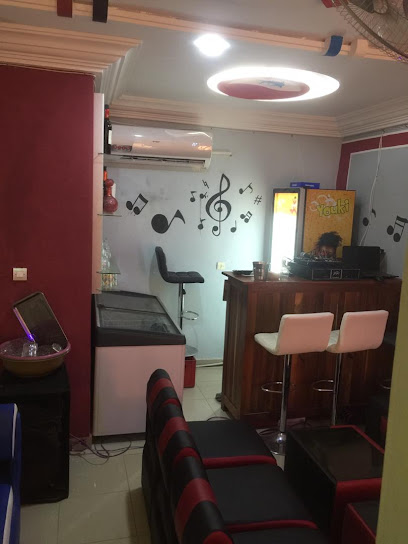
Klaman beach
Discover the tranquil beauty of Klaman Beach in San-Pédro, a perfect blend of relaxation, local culture, and delicious cuisine.
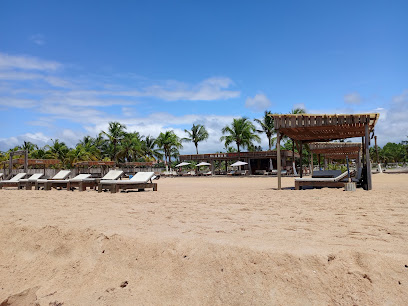
BOSS NIGHT CLUB
Dive into the vibrant nightlife of San-Pedro at BOSS NIGHT CLUB, where unforgettable parties and electrifying music await every night.

Local Phrases
-
- HelloAlo
[ah-loh] - GoodbyeA dieu
[ah dyuh] - YesOui
[wee] - NoNon
[nohn] - Please/You're welcomeS'il vous plaît/De rien
[seel voo pleh/dee ryen] - Thank youMerci
[mehr-see] - Excuse me/SorryPardon/Desolé
[pahr-dohn/deh-soh-leh] - How are you?Comment ça va?
[koh-mohn sah vah] - Fine. And you?Bien. Et toi?
[byen/eh twah] - Do you speak English?Parlez-vous anglais?
[pahr-leh voo ahn-glay] - I don't understandJe ne comprends pas
[zhuh nuh kohm-prahn pah]
- HelloAlo
-
- I'd like to see the menu, pleaseJe voudrais voir le menu, s'il vous plaît
[zhuh voo-dreh vwar luh meh-noo/seel voo pleh] - I don't eat meatJe ne mange pas de viande
[zhuh nuh mahnj pah deh vee-and] - Cheers!Santé!
[sahn-tay] - I would like to pay, pleaseJe voudrais payer, s'il vous plaît
[zhuh voo-dreh peh-yeh/seel voo pleh]
- I'd like to see the menu, pleaseJe voudrais voir le menu, s'il vous plaît
-
- Help!Au secours!
[oh seh-koor] - Go away!Va-t'en!
[vah-tuhn] - Call the Police!Appelez la police!
[ah-peh-leh lah poh-lees] - Call a doctor!Appelez un médecin!
[ah-peh-leh uhn meh-deh-sahn] - I'm lostJe suis perdu
[zhuh swee pehr-doo] - I'm illJe suis malade
[zhuh swee mah-lahd]
- Help!Au secours!
-
- I'd like to buy...Je voudrais acheter...
[zhuh voo-dreh ash-tey] - I'm just lookingJe regarde juste
[zhuh ruh-gahrd zhuhst] - How much is it?Combien ça coûte?
[kohm-byen sah koot] - That's too expensiveC'est trop cher
[seh troh shehr] - Can you lower the price?Pouvez-vous baisser le prix?
[poo-veh voo beh-say luh pree]
- I'd like to buy...Je voudrais acheter...
-
- What time is it?Quelle heure est-il?
[kehl uhr eh-teel] - It's one o'clockIl est une heure
[eel eh oon uhr] - Half past (10)Dix heures et demie
[dees uhr ay dehm-yeh] - MorningMatin
[mah-tahn] - AfternoonAprès-midi
[ah-pray mee-dee] - EveningSoir
[swahr] - YesterdayHier
[yehr] - TodayAujourd'hui
[oh-zhoor-dwee] - TomorrowDemain
[deh-mahn] - 1Un
[uh] - 2Deux
[duh] - 3Trois
[twah] - 4Quatre
[ka-truh] - 5Cinq
[sank] - 6Six
[sees] - 7Sept
[sept] - 8Huit
[weet] - 9Neuf
[nuhf] - 10Dix
[dees]
- What time is it?Quelle heure est-il?
-
- Where's a/the...?Où est le/la...?
[oo eh luh/lah] - What's the address?Quelle est l'adresse?
[kehl eh lah-drehss] - Can you show me (on the map)?Pouvez-vous me montrer (sur la carte)?
[poo-veh voo muh mohn-tray/sur lah kart] - When's the next (bus)?Quand est le prochain (bus)?
[kahnd eh luh proh-shang/bus] - A ticket (to ....)Un billet (pour ....)
[uhn bee-yeh/poor]
- Where's a/the...?Où est le/la...?
History of San-Pédro
-
San-Pédro, located in the southwestern part of Côte d'Ivoire, was originally a small fishing village inhabited by the Krou ethnic group. The area's lush forests and proximity to the Atlantic Ocean made it an attractive location for early settlers. The village remained relatively isolated until the mid-20th century, when its potential as a port town was recognized by colonial authorities.
-
During the French colonial period, San-Pédro began to gain recognition due to its strategic location along the coast. In the 1960s, as Côte d'Ivoire was making strides towards independence, the decision was made to develop San-Pédro into a major port to support the nation's economy. This development included the construction of modern port facilities, roads, and other infrastructure, which transformed the town from a quiet village into a bustling port city.
-
San-Pédro's port quickly became one of the most important in West Africa, serving as a key export point for the country's cocoa, timber, and other agricultural products. The city's economy flourished, attracting workers and businesses from across the region. The growth of the cocoa industry, in particular, played a significant role in San-Pédro's economic boom, as Côte d'Ivoire became one of the world's leading cocoa producers.
-
The stability of San-Pédro was tested during the Ivorian Civil War, which began in 2002. While the city itself was not a central battleground, the conflict disrupted economic activities and caused social unrest. Following the war, efforts were made to rebuild and revitalize the city. Investments in infrastructure and social services helped to restore San-Pédro's status as a major economic hub in the region.
-
San-Pédro is a melting pot of cultures, with a diverse population that includes people from various ethnic groups and nationalities. This diversity is reflected in the city's vibrant cultural scene, which features a range of festivals and events. The annual San-Pédro Festival, for example, showcases traditional music, dance, and cuisine, celebrating the rich heritage of the local communities. Additionally, the city's markets and artisan shops offer a glimpse into the traditional crafts and practices of the region.
-
In recent years, San-Pédro has become a popular destination for tourists seeking to experience the natural beauty and cultural richness of Côte d'Ivoire. The city's pristine beaches, lush forests, and wildlife reserves attract visitors from around the world. Nearby attractions such as the Taï National Park, a UNESCO World Heritage site, offer opportunities for eco-tourism and wildlife observation. The development of tourism infrastructure has further enhanced San-Pédro's appeal as a destination for both domestic and international travelers.
San-Pédro Essentials
-
San-Pédro, located in the southwestern part of Côte d'Ivoire, is accessible by both air and road. The San-Pédro Airport (SPY) offers domestic flights from Abidjan, the capital city. The flight takes approximately 1 hour. Alternatively, you can travel by road from Abidjan, which is about a 6-hour drive (around 360 kilometers). Buses and private car hires are available for this journey.
-
Transportation within San-Pédro includes taxis, moto-taxis (motorcycle taxis), and local minibuses known as 'Gbaka'. Taxis are relatively inexpensive and can be hailed from almost anywhere in the city. Moto-taxis are a quicker option for short distances but be cautious of safety. For exploring the surrounding areas, renting a car is advisable. There are also intercity buses that connect San-Pédro with other major cities in Côte d'Ivoire.
-
The official currency is the West African CFA franc (XOF). While credit cards are accepted in some hotels and restaurants, it is advisable to carry cash, especially for smaller establishments and local markets. ATMs are available in San-Pédro, but it's wise to withdraw a sufficient amount of cash in larger cities like Abidjan before heading to San-Pédro.
-
San-Pédro is generally safe for tourists, but standard precautions should be taken. Avoid walking alone at night, particularly in less populated areas. Be cautious in places like the port area and certain neighborhoods where petty crimes such as pickpocketing can occur. Always keep an eye on your belongings in crowded places and avoid displaying valuables openly.
-
In case of emergencies, dial 170 for ambulance services and 111 for police assistance. San-Pédro has a local hospital and several clinics for medical emergencies. It is highly recommended to have travel insurance that covers medical emergencies. For minor health issues, pharmacies are available where you can purchase over-the-counter medications.
-
Fashion: Do dress modestly, especially in areas away from the beaches. Avoid overly revealing clothing. Religion: Do respect local customs and religious practices. When visiting mosques or churches, dress conservatively and remove your shoes if required. Public Transport: Do be courteous and respectful to drivers and other passengers. Don't argue with drivers over fares; they are generally fixed. Greetings: Do greet people with a handshake and a warm smile. Using basic French greetings like 'Bonjour' is appreciated. Eating & Drinking: Do try local dishes and be open to new culinary experiences. Don't refuse food or drink offerings, as it may be considered impolite.
-
To experience San-Pédro like a local, visit the bustling central market to buy fresh produce and handmade crafts. Engage with locals, who are known for their friendliness and hospitality. Don't miss the opportunity to explore the beautiful beaches such as Monogaga and Néro-Mer. Attend local festivals and events to immerse yourself in the vibrant culture of the region.
Trending Landmark in San-Pédro
-
ENOTEL BEACH San-Pedro
-
Hôtel Sophia San Pedro
-
Hôtel Nahoui
-
Hôtel Palm Rock Beach
-
Hôtel Rialto
-
Hotel CANNELLE
-
San-pedro
-
Grand Mosque San Pedro
-
Le Rocher des Amours
-
Plage de San pedro
-
Le Guide de San Pedro
-
Monument de la Paix
-
Court D'arbitrage Et De Médiation De Côte d'Ivoire San Pedro
-
Plage de Taki
-
Piscine Naturelle
Nearby Cities to San-Pédro
-
Things To Do in Sassandra
-
Things To Do in Daloa
-
Things To Do in Yamoussoukro
-
Things To Do in Abidjan
-
Things To Do in Sanniquellie
-
Things To Do in Ganta
-
Things To Do in Buchanan
-
Things To Do in Gbarnga
-
Things To Do in Kakata
-
Things To Do in Monrovia
-
Things To Do in Voinjama
-
Things To Do in Takoradi
-
Things To Do in Sekondi-Takoradi
-
Things To Do in Sunyani
-
Things To Do in Kumasi






